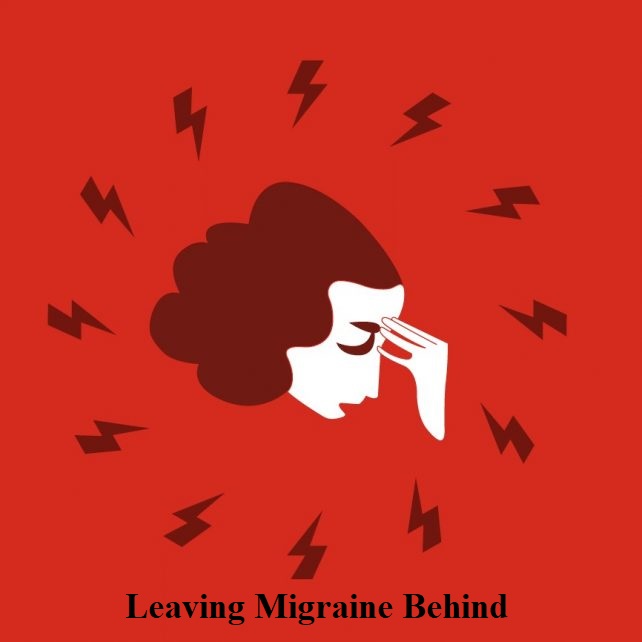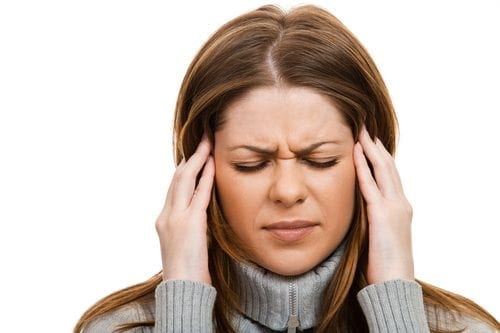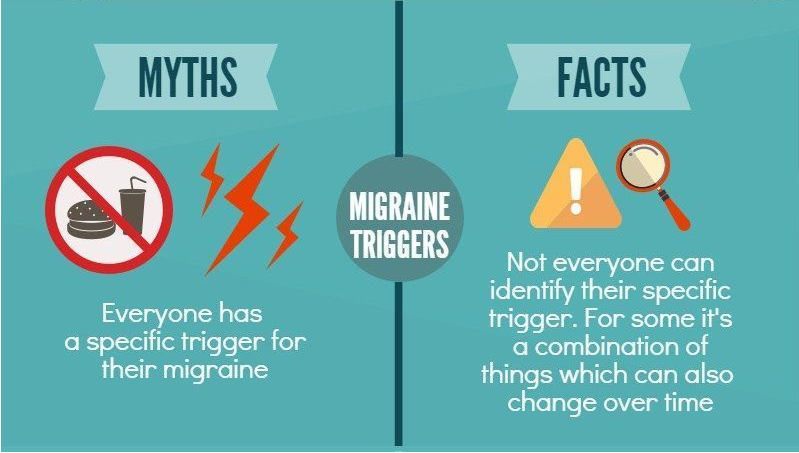
What does a migraine feel like? How to get rid of migraine?
What is a migraine?
It is a neurological condition that causes multiple symptoms to occur. It is an intense, throbbing, and excruciating headache. Migraine symptoms can include vomiting, nausea, numbness, and sensitivity to light and sound. People usually start to experience it in childhood, but some might not come across a migraine until their early adulthood.
Migraine usually occurs in people of all ages and often runs in the family. However, women are more likely than men to experience a migraine. Migraine diagnosis depends on clinical history by the analysis of reported symptoms and ruling out the other possible causes.

The American Migraine Foundation states that there are more than 36 million people in the United States are affected by this condition, and women are three times as likely as men to have a migraine. An average migraine can last from 4 to 72 hours.
What are the causes of a migraine?
Though doctors are not sure about actual migraine causes, researchers identified some of the factors that might trigger a migraine. It includes a change in the chemicals in the brain, like fluctuating serotonin levels.
Some other factors that might contribute to causing a migraine include
- Dehydration
- Excess stress
- Skipping meals
- Changes in barometric pressure
- Severe heat
- Extreme weather
- Intense physical activity
- Use of medications
- Hormonal changes in women during pregnancy, menstruation, or menopause
- Bright lights
- Changes in sleep patterns
- Loud sounds
- Smoking
- Traveling
- Alcohol use
- Unusual smells
Doctors often ask the patient to keep a headache journal in which they write down what they were doing, ate, and used which drugs when they experience the symptoms. Doctors use this data to identify migraine triggers and help the patient better combat this condition.
What factors increase the risk of a migraine?
Not everyone is as likely to get a migraine. Several factors can increase the risk of a person getting a migraine. These can include
Family history
People who have family members with migraines have a higher chance of getting it too.
Age
Though migraines can occur in people of all ages, these are more common in people who are in their 30s, as migraines tend to peak during this period of life. The severity and frequency start to decrease in the following decades.
Gender
This condition disproportionally affects women, as they are three times more likely to have a migraine than men.
Hormonal changes
Women might experience increased symptoms of migraines with the onset of menstruation. The condition can also become severe during pregnancy or menopause, as these are the times when there is a lot of hormonal imbalance in the body.
What are the different stages of a migraine?
A migraine can progress through 4 stages, namely prodrome, aura, attack, and postdrome. Not all the people who have migraines go through all of these stages. It is the usual progression of this condition.

Prodrome
These symptoms usually occur one or two days before the onset of the migraine pain and warn the person about the future problem. These includes:
- Food cravings
- Frequent yawning
- Neck stiffness
- Constipation
- Mood changes
- Increased urination and thirst
Aura
These symptoms typically last for 20 to 60 minutes and can occur during migraines. Caused by the nervous system, these are reversible, and usually affect the vision of a person, but sometimes include other disturbances also.
Some of the aura symptoms one can face include
- Loss of vision
- Difficulty in speaking
- Visual or auditory Hallucinations
- Involuntary jerking or other movements
- Numbness of the face or one side of the body
Attack
It is the stage when the migraine sets in. It can last for upto 72 hours if not treated. A person having a migraine can experience the following:
- Pain that throbs or pulses
- Sensitivity to light, smell, sound, touch
- Vomiting and nausea
- Pain in the one side of the head
Post-drome
It is the final stage of a migraine, and a person might feel confused, drained, or washed out for a short period. Some people experience the feeling of delight in this stage, but for some, a sudden head movement of the head can bring back the pain for a brief period.
How is a migraine tested medically?
The diagnosis of migraines is made by listening to patients about their symptoms. Doctors also look at the medical history of the patient’s family and perform a physical examination to narrow down the potential causes. They use processes like CT scan or MRI to determine if physical objects such as tumors or abnormal brain structures are the reason for this condition, and then they figure out how to get rid of a migraine.
What are the treatments available for a migraine?
There is no permanent cure for migraines, but doctors can help a person manage them so that they can experience them less often. These treatments can help make migraines less severe. A doctor can implement a treatment plan, depending on the following:
- How often one has migraines
- Their age
- The type of migraines
- The severity of the migraines
- How long they last
- Whether nausea or vomiting is present
- Other health issues that a person might have
As there is no specific treatment for migraine relief, a doctor might try a combination of different therapies to figure out what works best for an individual. These include; self-care remedies, lifestyle adjustments, stress management, OTC and prescription pain medications, hormone therapy, counseling, etc.
Self-care remedies
A person can try these remedies to get relief from the pain:
- Massage scalp or temples.
- Lie down in a quiet and dark-room.
- Place a cold cloth behind the neck or on the forehead.
Migraine medication
Doctors can recommend migraine pills to help with the symptoms. Usually over the counter medicines are sufficient to get the pain down, but they don’t work then the doctor can prescribe other medications.
Which drug will the doctor prescribe depends on the severity and type of migraine a person is having. One mustn’t take prescription medicines to cure migraines without consulting a healthcare professional to avoid any risk of side effects.
Migraine surgery
There are different surgeries that a doctor can perform to help treat the migraine. These surgeries include neurostimulation procedures and MTSDS. Though these procedures can provide relief to a person, the FDA does not approve any such practices. The American Migraine Foundation states that people should visit a headache specialist before considering going through a surgical procedure.
What are the different types of migraines?
There are several types of migraines. The two most common forms are migraine with aura and without aura. Different types of migraines that a person can have are as follows:
Migraine with aura
These are called classic or hemiplegic migraines. These only occur in about 25 percent of the people, and according to the International Headache Society, people who have at least two attacks with symptoms of visual problems, sensory problems, speech problems, issues in controlling movement, eye problems, etc. had experienced this type of migraine.
Migraine without aura
This migraine also called common migraine, and most people who have this don’t experience an aura. As per the International Headache Society, those who have a migraine without aura have at least five attacks that last for 4 to 72 hours with a pulsating or throbbing headache.
Acephaligic migraine
Also known as a migraine without headaches, these are common in people over 40 years of age. In this type of migraine, a person might not experience a headache but can feel other symptoms associated with the condition.
Optical migraine
It is a rare type of migraine that can affect only one eye. It is also known as ocular migraine and can result in temporary vision problems in one eye. These problems typically occur within an hour from the onset of the condition and are mostly painless.
Chronic migraines
People who are experiencing symptoms of migraine or severe tension headaches for more than 15 days for three or months have chronic migraines. These are also known as mixed or combination headaches as they can exhibit the features of tension headaches and migraines.
Tips for Aging Adult with insomnia
Acute migraine
The migraines not diagnosed as chronic are known as acute migraine. People with this type of migraines can have fewer episodes than those with chronic ones. Due to its episodic tendencies where a person can have occasional issues up to 14 days a month, experts termed them as episodic migraines.
Vestibular migraine
Migraines associated with vertigo come under this category. People with migraines have some vestibular symptoms, that can affect their balance or cause dizziness. These types of issues can occur in people of all ages. A vestibular rehabilitation therapist can better serve those having this kind of experience.
Hormonal migraine
These types of migraines are associated with female hormones, usually estrogen. Also known as exogenous estrogen withdrawal headaches and menstrual migraines, these can occur when a woman is going through her period, pregnancy, ovulation, perimenopause. They can also experience this type of migraine for the first days when they stop using the medications that contain estrogen.
